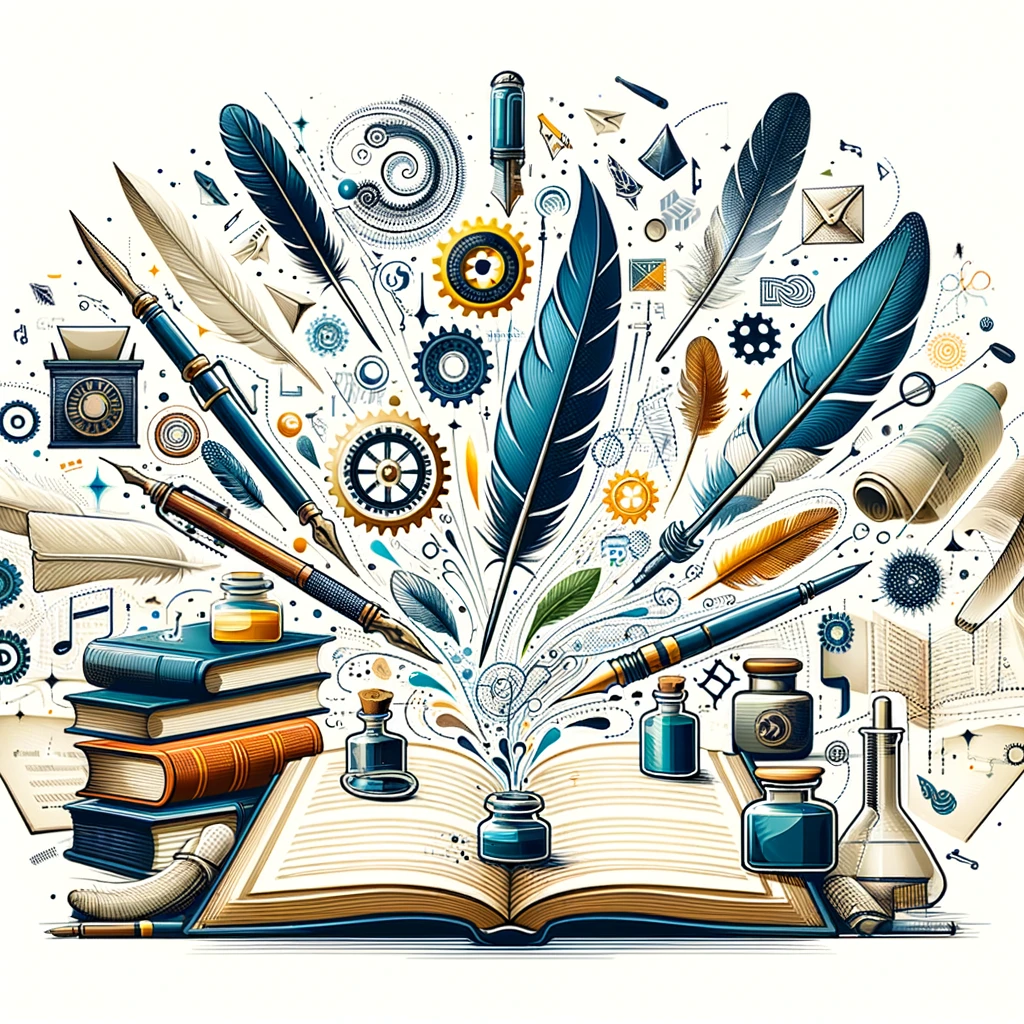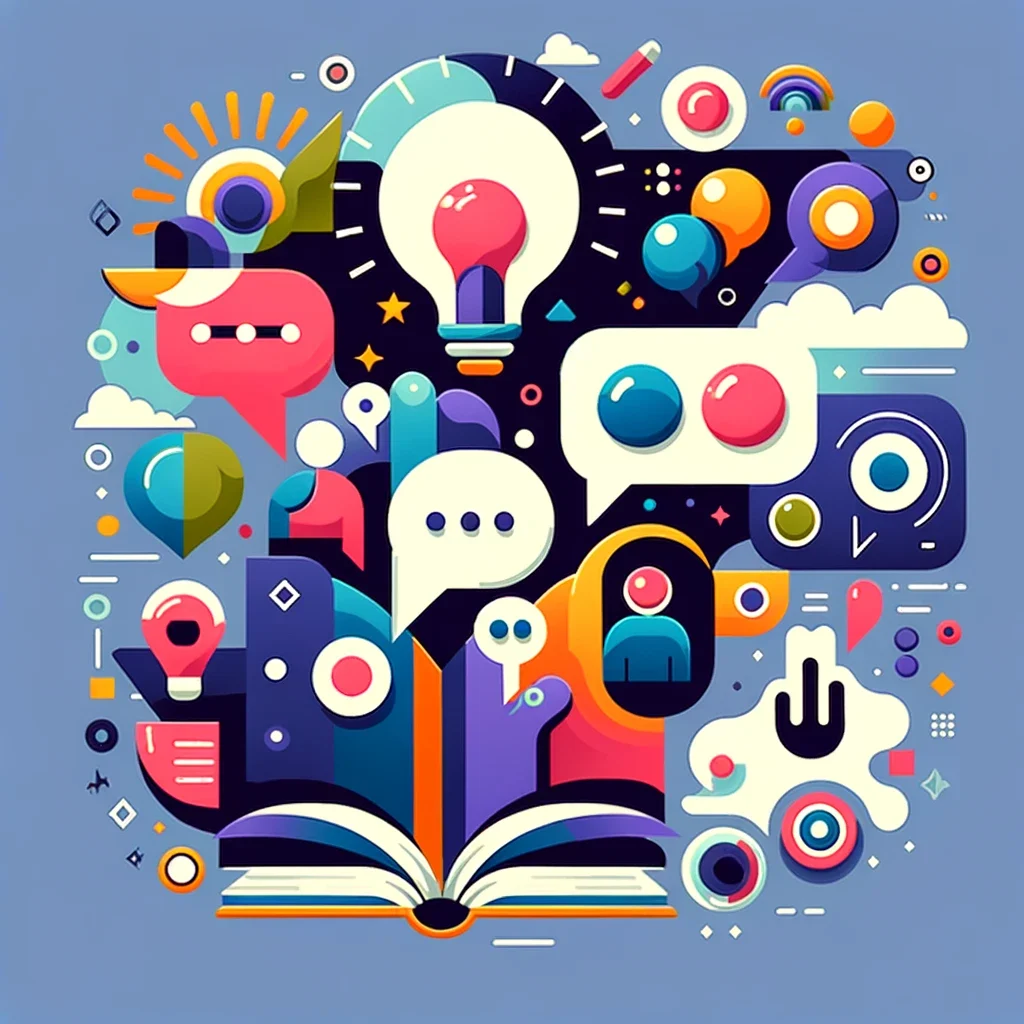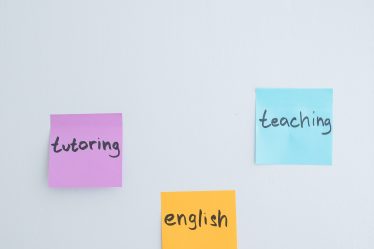
Literary devices can enhance your essay and composition by adding depth and emotion. This guide will explain metaphor, simile, anaphora, epiphora, palindrome, alliteration, and other vital literary devices. You’ll learn their definitions and purposes and see them applied in the literature. Mastering these tools will help you improve your writing and enrich the reader’s experience. Whether you’re just starting or working on your school interpretive essay, understanding these elements will help you create engaging and impactful storytelling.
Have you had a chance to check out our study guide on idioms, expressions, euphemisms, and other phrases? It’s a great resource to explore!
Introduction to Literary Devices: Crafting Engaging Narratives
Literary devices are tools writers use to create more engaging and vivid stories. They help to convey emotions, paint pictures in the reader’s mind, and connect with the audience on a deeper level. From novels and poems to plays and short stories, these devices fundamentally shape how we experience written work.
At their core, literary devices manipulate language to achieve a specific effect. For example, a metaphor can draw a comparison that illuminates a new perspective, while alliteration adds a musical rhythm to the text, making it more memorable. Irony, on the other hand, can add humor or depth by presenting a contrast between expectations and reality.
Understanding these devices is for more than just professional writers. Students, readers, and anyone interested in writing can benefit from knowing how these tools work. Like stylistic devices, they enhance the enjoyment of literature and equip you to express your thoughts and stories more effectively.
In this guide, we’ll delve into the definitions and purposes of various literary devices and explore examples from literature to see how they are applied in practice. Whether you aim to write compelling fiction, great character descriptions, or simply appreciate the nuances of your favorite books, mastering literary devices is a step toward richer literary engagement.
Essential Literary Devices for Every Writer
Anaphora: The Power of Repetition
Anaphora is a literary device in which a word or phrase is repeated at the beginning of consecutive sentences or clauses. This technique emphasizes main themes or ideas, adds rhythm, and can evoke strong emotional responses from the reader. Anaphora is a powerful tool for highlighting a particular point or increasing the persuasive impact of a piece of writing.
Examples of Anaphora in Literature
Martin Luther King Jr.’s “I Have a Dream” speech is a prime example, with the repeated use of “I Have a Dream” to underscore his vision for equality and freedom. In literature, Charles Dickens’s “A Tale of Two Cities” opens with anaphoric phrases, including “It was the best of times, it was the worst of times,” to contrast the era’s conditions.
Metaphor: Unveiling Hidden Connections
A metaphor is a figure of speech that directly compares two unrelated subjects to reveal a new understanding or highlight similarities. Unlike similes, metaphors do not use “like” or “as” for comparison. They blend imagery and meaning, enriching texts by offering more profound insights into the subjects discussed. Read more about metaphor here.
Examples of Metaphors in Literature
Shakespeare’s “All the world’s a stage” from “As You Like It” metaphorically compares life to a play, suggesting that our actions are performances. Sylvia Plath’s poem “Daddy” uses metaphors like “I have always been scared of you, / With your Luftwaffe, your gobbledygoo” to convey complex emotions and relationships.
Epiphora: Strengthening Statements Through Repetition
Epiphora, or epistrophe, involves repeating a word or phrase at the end of successive sentences or clauses. This device reinforces the closing words across different statements, making the overall message more memorable and impactful. It is often used to evoke an emotional response or to emphasize a particular sentiment.
Examples of Epiphora in Literature
In his speech “We Shall Overcome,” Lyndon B. Johnson effectively uses epiphora: “We shall overcome. We shall overcome.” This repetition solidifies his commitment to civil rights. William Shakespeare’s “Julius Caesar” uses epiphora in the lines “For Brutus, as you know, was Caesar’s angel. Judge, O you gods, how dearly Caesar loved him!” to emphasize Brutus’s betrayal.
Palindrome: The Fascination of Symmetry in Text
A palindrome is a word, phrase, number,, or another sequence of characters that reads the same forward and backward, ignoring spaces, punctuation, and capitalization. Its symmetry offers a unique charm and can add layers of meaning or playful intrigue to a piece of writing.
Examples of Palindrome in Literature
Classic examples include “madam” and “racecar.” A famous longer example is “A man, a plan, a canal, Panama!” which impressively reads identically in reverse.
Epithet: Crafting Character Through Descriptive Brilliance
An epithet is a descriptive phrase expressing a quality or attribute considered characteristic of the person or thing mentioned. It adds depth, paints a more vivid image, and contributes to the reader’s understanding of a character or setting.
Examples of Epithet in Literature
Homer often used epithets, like “swift-footed Achilles,” to reinforce character traits. Shakespeare also employed them effectively, using phrases like “star-crossed lovers” to describe Romeo and Juliet and beautifully encapsulate their doomed love.
Epanalepsis: Echoing for Emphasis
Epanalepsis is a figure of speech where the beginning of a clause or sentence is repeated at the end, creating a frame that highlights the enclosed statement. This device draws attention to the repeated phrase and emphasizes the central idea.
Examples of Epanalepsis in Literature
Charles Dickens employs epanalepsis in “A Christmas Carol”: “Mankind was my business. The common welfare was my business; charity, mercy, forbearance, and benevolence were all my business.” This repetition emphasizes Scrooge’s realization of his neglected duties.
Hyperbole: Exaggeration for Effect
Hyperbole is a figure of speech that uses extreme exaggeration to make a point or show emphasis. It is not meant to be taken literally but is used for effect, to evoke strong feelings, or to create a strong impression.
Examples of Hyperbole in Literature
In The Adventures of Pinocchio, Carlo Collodi uses hyperbole to describe Pinocchio’s nose growing so long that he can’t turn around in the room without bumping into something. This vivid exaggeration highlights the consequences of lying.
Irony: Conveying Contrasts Between Expectations and Reality
Irony involves a contrast or discrepancy between expectations and reality, often highlighting the opposite of what is intended or expected. There are several types of irony, including situational irony, verbal irony, and dramatic irony. Each enriches narratives by adding layers of complexity and humor.
Examples of Irony in Literature
A prime example of dramatic irony is in Sophocles’ “Oedipus Rex,” where Oedipus seeks to punish the murderer of the former king, unaware that he himself is the killer. The audience’s awareness of Oedipus’s true identity against his ignorance creates a poignant effect of irony.
Onomatopoeia: Sound Words in Action
Onomatopoeia refers to words that imitate the sounds they describe. This literary device mimics real-life sounds in writing, enriching the text by adding auditory effects and enhancing the reader’s experience. It brings dynamism and vividness to descriptions, making scenes more lively and immersive.
Examples of Onomatopoeia in Literature
Edgar Allan Poe’s “The Bells” uses onomatopoeia to mimic the sounds of various bells, with words like “tinkle,” “jingle,” and “tolling.” In “The Raven,” the repeated “tap” and “rapping” at the chamber door intensifies the poem’s eerie atmosphere.
Alliteration: The Lure of Lingering Sounds
Alliteration is the repetition of initial consonant sounds in close or adjacent words. This device adds musicality, enhances readability and contributes to a piece’s rhythm. Alliteration can make passages more memorable and engaging for the reader.
Examples of Alliteration in Literature
Tongue twisters are fun examples, but alliteration is also used in literature for effect. In Samuel Taylor Coleridge’s The Rime of the Ancient Mariner, “The fair breeze blew, the white foam flew” showcases alliteration’s ability to enhance the poem’s rhythm and mood.
Imagery: Painting with Words
Imagery involves using descriptive language to create vivid pictures in the reader’s mind. This literary device appeals to the senses, allowing readers to see, hear, touch, smell, and taste the elements of the story. By drawing on sensory details, writers can transport readers into the narrative world, making experiences more immersive and emotions more intense.
Examples of Imagery in Literature
In F. Scott Fitzgerald’s The Great Gatsby, the lavish description of Gatsby’s parties vividly paints a picture of excess and beauty: “The lights grow brighter as the earth lurches away from the sun, and now the orchestra is playing yellow cocktail music…” Such imagery sets the scene and underscores themes of luxury and disillusionment.
Symbolism: Deeper Meanings Hidden in Plain Sight
Symbolism uses symbols to signify ideas and qualities by giving them symbolic meanings different from their literal sense. This device imbues the narrative with deeper layers, allowing writers to convey complex themes and emotions subtly. Symbols can be objects, characters, figures, or colors, each adding depth and nuance to the story.
Examples of Symbolism in Literature
In “To Kill a Mockingbird” by Harper Lee, the mockingbird symbolizes innocence and the destruction of innocence. Characters like Tom Robinson and Boo Radley are metaphorical mockingbirds; they are misunderstood and harmed by society despite doing no wrong. This symbolism enriches the novel’s morality, justice, and compassion exploration.
Improving your essay writing starts with understanding its structure; our guide on how to write an essay and the use of stylistic devices can elevate your writing from good to great.
How to Learn to Use Metaphor and Irony: Enhancing Your Writing with Tutoring
This exploration has illuminated how literary devices like metaphor, irony, and alliteration deepen the narrative impact. Consider tutoring, classes, or lessons with a private teacher to harness these devices’ full power. Such tailored guidance can refine your understanding and application, making your writing resonate more deeply with readers. Engaging with metaphor, simile, anaphora, epiphora, palindrome, alliteration, and other vital literary devices through focused tutoring or lessons can unlock new levels of creativity and clarity in your work.
If you’re seeking a tutor to help you master phraseology, a quick search for “writing tutor London” or “tutoring London” on platforms like meet’n’learn can connect you with the ideal private teacher.
For those who thrive in group settings, “writing lessons Edinburgh” or “English courses Leeds” will reveal nearby classes and educational centers that enhance your phraseology skills.
Frequently Asked Questions: Literary Devices in Writing
1. What are literary devices in writing?
Literary literary devices are tools writers use to add depth, clarity, and appeal to their work, enhancing the reading experience.
2. How do literary devices improve writing?
Literary devices improve writing by enriching the text with vivid imagery, deeper meaning, and a more engaging narrative structure.
3. What is anaphora?
Anaphora is a literary device where the same word or phrase is repeated at the beginning of consecutive sentences or clauses to emphasize a point.
4. Can you give examples of metaphors?
Examples of metaphors include “Time is a thief” and “The world is a stage,” where unrelated things are compared to convey a deeper understanding.
5. What is epiphora?
Epiphora is the repetition of a word or phrase at the end of successive sentences, used to emphasize a concept or feeling.
6. What’s the difference between a metaphor and a simile?
A metaphor directly compares two things, implying they are the same, while a simile uses “like” or “as” to compare them.
7. How is a palindrome used in literature?
A palindrome is a word, phrase, or sequence that reads the same backward as forward. It is used for effect or as a linguistic curiosity in literature, like “racecar” or “madam.”
8. Can you provide examples of epithets in literature?
Examples of epithets include “swift-footed Achilles” from Homer’s “Iliad” and “the wine-dark sea,” which vividly describe characters or elements beyond their names.
Whether crafting a personal story or an academic piece, our narrative essay writing tips and advice on interpretive essay writing can guide you in conveying your ideas.
References:
1. Scribe media
2. Grammarly
3. Reedsy



